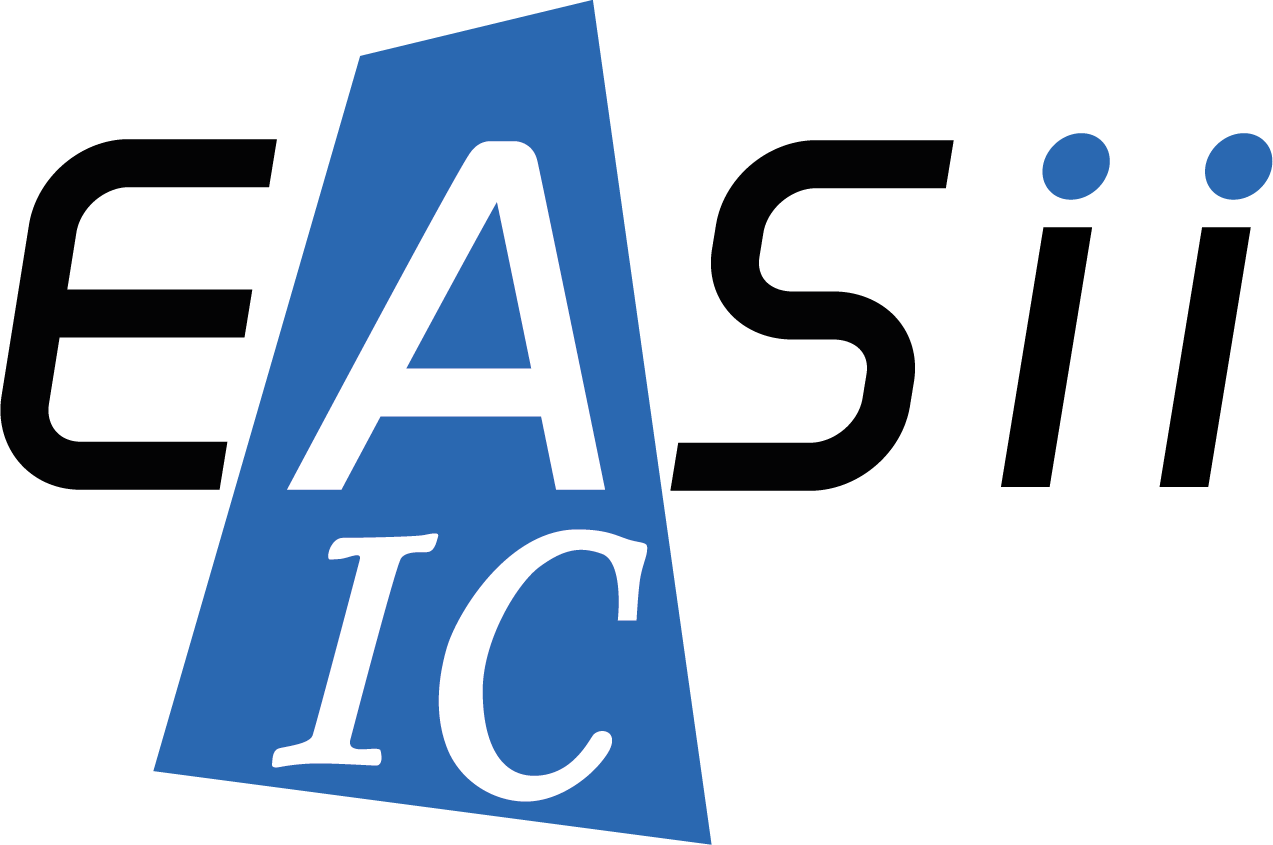MMIC Design Methodologies
Monolithic microwave integrated circuit, or MMIC is an Integrated Circuit (IC) device that operates at Microwave frequencies (300 MHz to 300 GHz).
Perform functions such as High Power Amplifiers (HPA), Low-Noise Amplifiers (LNA) and Single Pole Double Throw (SPDT) Switch.
MMICs are dimensionally small (from around 1 mm² to 10 mm²) and can be mass-produced, which has allowed the proliferation of High-frequency devices and applications.
MMICs were originally fabricated using Gallium Arsenide (GaAs), a III-V compound Semiconductor.
Originally, MMICs used Metal-Semiconductor Field-Effect Transistors (MESFETs) as the active device. More recently High-Electron-Mobility Transistor (HEMTs), and Heterojunction Bipolar Transistors (HBTs) have become common.
Other III-V technologies, such as Indium Phosphide (InP), have been shown to offer superior performance to GaAs in terms of gain, higher cutoff frequency, and low noise. However, they also tend to be more expensive due to smaller wafer sizes and increased material fragility.
Silicon Germanium (SiGe) is a Si-based compound Semiconductor Technology offering higher-speed transistors than conventional Si devices but with similar cost advantages.
Gallium Nitride (GaN) is also an option for MMICs. Because GaN Transistors can operate at much higher temperatures and work at much higher voltages than GaAs Transistors, they make ideal power amplifiers at microwave frequencies.
MMIC Design:
MMIC design involves a number of circuit simulation, layout, fabrication, and testing steps. The large number of variables involved in these steps makes it imperative that all facets of the implementation be documented to assure repeatability of similar designs and improve the yield of the final product.
Since MMICs are increasingly being used in large-scale production programs, the producibility of a given design must be considered at the beginning of the design process.
MMIC Documentation:
A well-documented MMIC design methodology ensures a much smoother and faster turnaround of circuits. Circuit designs along with information relating to layout,
processing, and testing can be preserved and used for future applications, thereby eliminating duplication of effort and providing substantial time and cost savings.
In general, the available documentation should provide the interested customer with a description of the CAD tools, semiconductor processing steps, and test methods used at the foundry. From a user’s perspective, the level of documentation available at a MMIC foundry is a reflection of the maturity of the facility and the extent of process control being applied and practiced.
Typical documentation may include:
(1) Semiconductor processing capabilities.
(2) Design and layout rules used at the foundry.
(3) Design and layout tools used at the foundry.
(4) Available library designs.
(5) Available simulation tools.
(6) Available device and circuit element models.
(7) Design and processing flow.
(8) Design verification and review.
(9) Design and processing schedule information.
MMIC Simulation:
Circuit simulation is an essential step in the design and fabrication of MMICs for production purposes. Simulations can provide a first-order approximation of circuit
functionality and performance under various input and output conditions prior to committing the design to fabrication.
Since most simulators also include an optimization capability, circuits can be fine-tuned, or in some cases synthesized, to meet the required performance specifications.
One of the biggest obstacles in transferring a customer-developed MMIC design to a MMIC foundry is the issue of design-tool compatibility. The customer must verify that the tools used by both entities for the design and simulation are compatible.
Monte Carlo analysis is defined as a simulation process that generates probabilities of risk using a mathematical model. The method provides a range of possible results based on the varying parameters that are measured in the analysis. Monte Carlo analysis is about generating predictive situational results based on distributing factors that may influence the outcome of the process. It takes into account the maximum and minimum threshold of each parameter and randomly iterates the simulation with different values.
MMIC Layout
Conversion of the MMIC design into a layout can be accomplished in two ways; the first uses a commercially available CAD software program to manually perform the layout from a hard copy of the schematic or netlist.
Tools specializing in design layout verification compare the actual chip layout to the circuit schematic and physical design rules and then provide specific error reports with defined locations.
Design rule checks are performed by comparing the geometric spacings of the MMIC layout against predefined physical design rules. These rules depend on the technology and processing capabilities of the foundry and are therefore generated by individual foundries; they are applicable to the foundry’s processes only.
Typical Design Methodology
Cost reduction at all stages of design, fabrication, and test is of prime importance. The use of CAD simulation and layout tools plays a pivotal role in first-time success and yield of a MMIC design.
Designing a MMIC involves two critical stages: performance specification, and circuit design and simulation. Other functions such as fabrication and test must also be considered during the design stages to arrive at a manufacturable product with high Yield and the desired performance.
Detailed understanding of the system requirements is necessary to arrive at design parameters applicable to the technology desired by the Customer.
In typical applications, the following must be addressed:
(1) Translation of customer requirements to design instructions.
(2) Suitability of technology and process to design requirements.
(3) Availability of existing designs.
(4) Cost, schedule, and performance trade-off.
Design Reliability and Manufacturability
Several factors may have a direct or an indirect impact on circuit yield and reliability. Device parameter variations as a result of process limitations or level of control, raw material variations, and EM proximity effects all play roles in determining overall circuit reliability and yield.
The definition of realistic and achievable performance requirements is probably the most important initial step in MMIC design. Pushing the design-performance boundaries may result in selection of devices that fall at the edges of the normal Gaussian distribution.
This will result in low yield and may have an impact on the reliability of the selected components. Therefore, design-performance requirements should fit very comfortably into the high-yield and assured-performance window of a MMIC foundry’s process.








